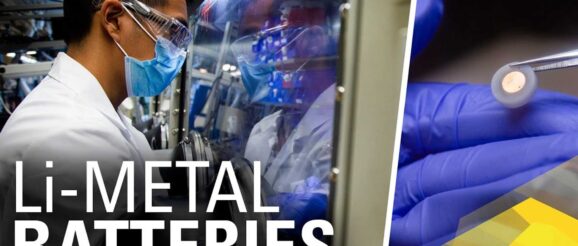Li Metal SSB Innovation Promises To Cut Battery Pack Mass In Half

Lithium metal batteries have double the theoretical energy capacity of lithium-ion cells. Anyone that makes them work will immediately cut the battery pack mass in half or double the current range any electric car offers. The problem is getting there, but researchers from the University of Michigan may be getting close with an “anode-less” approach.
The video above shows what they have achieved, but that also deserves a written explanation.
Lithium metal batteries with liquid electrolytes face dendrite formation as its major problem, leading them quickly to thermal runaway. To solve that, Jeff Sakamoto and his team applied a solid electrolyte to their battery: Li7La3Zr2O12 (LLZO). But that is just part of what they accomplished.
One of the challenges to produce a lithium metal solid-state battery is integrating metallic lithium with the chosen solid electrolyte. What if that can happen after the battery is already assembled, through an electrochemical process? This is what the researchers managed to do.
Instead of getting a battery with the cathode, the electrolyte, and the anode, they have eliminated the anode, which was replaced by a metallic foil made of copper, but other metals would probably also work.
This metal foil helps create the anode when lithium starts to plate there through a process developed by the researchers. It seems to be a charging method to plate lithium. We have contacted Jeff Sakamoto to confirm that and will update this article as soon as we hear from him.
More Battery Tech News:
So far, the cells made through this process were stable after 50 cycles and presented “high Coulombic efficiencies,” meaning electrons move without signs of any parasitic reactions, such as lithium filaments’ formation.
The paper said that “capacity fade” was observed after these 50 cycles, but not efficiency fade. The researchers believe the issue is with the composite cathode performance. When it improves, they may have provided us with the recipe for cells with higher energy density and no thermal runaway risks which are simpler to produce. That’s a bright perspective for drivers in search of lighter EVs or amazing ranges – or both.
